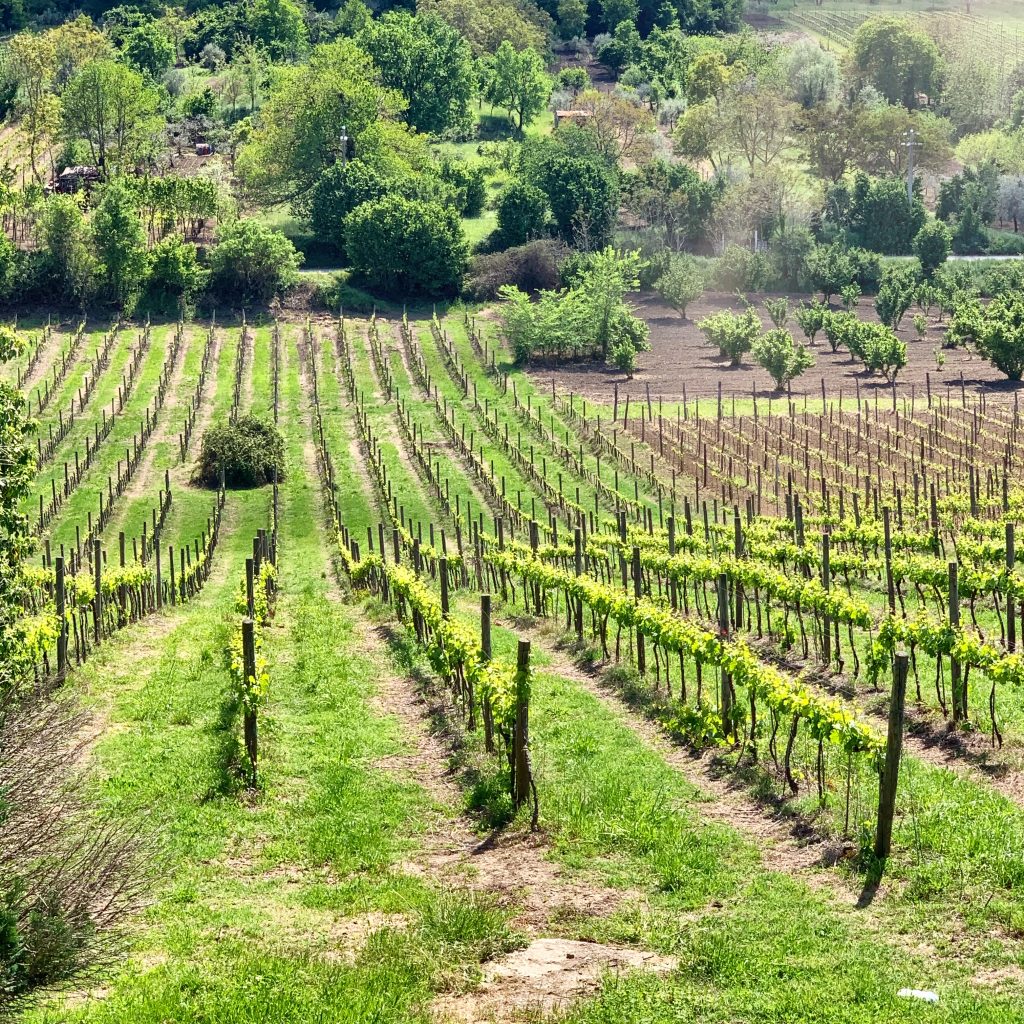The Territory
Our vineyards in the heart of Irpinia
The Ager Taurasinus
Production area
The production area of the DOCG Taurasi, it embraces a series of hills or foothills between 400 and 700 meters above sea level which accompany the course of the Calore river and are part of the Apennine ridge;includes the entire administrative territory of the 17 municipalities of Taurasi, Bonito, Castelfranci, Castelvetere sul Calore, Fontanarosa, Lapio, Luogosano, Mirabella Eclano, Montefalcione, Montemarano, Montemiletto, Paternopoli, Pietradefusi, Sant’Angelo all’Esca, San Mango sul Calore , Torre Le Nocelle and Venticano in the province of Avellino
The Terroir
«The soils have young and immature profiles and most of the time rest directly on their pedogenic substrates, both hard and compact rock and soft clayey and sandy rocks.»
The skeleton, both siliceous and calcareous, is scarcely present while clay abounds (up to 50% of the fine earth), sometimes mixed with silt and/or sand for which there are heavy soils (clayey, clayey-loamy) and soils light (sandy-clayey)
The soils also have a good presence of limestone, potassium oxide and exchangeable magnesium. This element positively influences the lignification and the organoleptic characteristics of the wines.
The high presence of clay protects the land from summer drought and therefore allows for a more regular ripening of the grapes and a normal level of acidity. The richness in potassium and magnesium gives the wines intensity of aroma, good structure and balance.
The Climate
The climate is continental with large temperature ranges and low rainfall. Sunny days are very high as are frequent spring frosts, even late frosts. The daily hikes are, from July to September, very much increased.
Taurasi, a millenary history
The name of the wine originates from the historical and ancient Taurasia, destroyed by the Romans in 268 BC. In this town and in the Campi Taurasini (“Ager Taurasinus”) in the years 181-180 BC. the Romans transferred a population of Liguri-Apuani, of Celtic stock and these, finding very fertile areas, resumed the cultivation of the fields and the so-called “Greek” vine. In 42 BC. After Philip‘s battle in Macedonia, the territory of Taurasia was assigned to veteran Roman soldiers who vinify the “Hellenic vitis” they brought from Macedonia. Tito Livio, in his Ab Urbe Condita, mentions a “Taurasia with opime vineyards” as a supplier of excellent wine for the Empire where the Greek or Hellenic vine was grown. Instead it dates back to 1167 AD. the first known document in which the vine in Taurasi is mentioned, which the Spaniards called the “Aglianica” vine; and it was the Spaniards who, due to their pronunciation, transformed the name of the vine from Ellenico into Aglianico.
Aglianico is a grumpy vine: it ripens late, it is intense and abrupt at the beginning, difficult to cultivate and very difficult to make wine, with tannins that take time to soften and acidity that ensures the necessary time for it to be smoothed out. Inimitable in the hints of violet, black cherry, undergrowth and small red fruits, its vinification with subsequent refinement can make it sublime.

The year 1928 represents the harvest symbol of the rebirth of Taurasi. All of Europe is devastated by phylloxera which has destroyed the vineyards of the best French districts and northern Italy; phylloxera has not yet arrived in Taurasi, thanks to the sandy and volcanic soils of Campania, which prevent its proliferation. In that year, whole wagons of Aglianico wine departed from the “wine railway” of Taurasi, to revive the main wine-growing districts of Tuscany, Piedmont and Bordeaux.
Phylloxera will be felt in southern Italy only towards the 1950s and in 1948 the reconstruction of those plants affected by the parasite also restarted in Taurasi, which spared only the vineyards on volcanic-sandy soils, which are also many in Campania and in production still today.
It was only after the war, in 1958, that under the pressure of reconstruction, the production of quality wine resumed and Aglianico found itself competing with the new vines that were planted on an American footing.
1970 gives the first Taurasi DOC, which the Disciplinary foresees as a wine made exclusively from Aglianico grapes, with small concessions (15%) to the local Piedirosso, Mantonico vines and since 2001 also to the ubiquitous Cabernet and Merlot.
In 1993, a great vintage, Taurasi achieved DOCG recognition, which remained the only one in the whole of central-southern Italy until 2003, the year of DOCG recognition for the other two great Irpini wines, Fiano and Greco.




